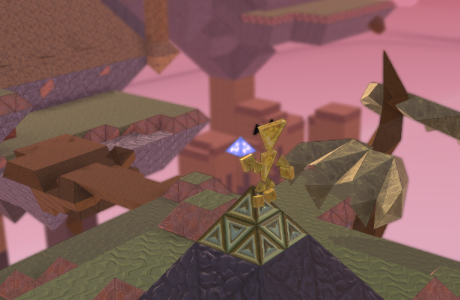Beyond mashing up: federating social networking in 3D
So, what’s wrong with Metaplace, Blue Mars, or other runners-up that wish to replace Second Life and become a “better” Second Life? First and foremost, you know my opinion about how venture capital is handed out: ideas come first, business plans next, market analysis last. That this actually works is for me incredibly surprising (but it does work!), and definitely shows my own inability to grasp the concept. Namely, how people are willing to invest in companies without a viable business plan and a complete lack of knowledge of the market always baffled me. Still, Philip wouldn’t have had his own company funded if it had been otherwise (but at least he managed to “reinvent” Linden Lab constantly to adapt to changing market conditions), so I keep my mouth shut 🙂
Nevertheless, it’s now obvious that Second Life, which also started as a “creative environment for designers and programmers to develop their own games”, totally moved away from that original concept. SL’s organic development has come out with absolutely surprising results: SL is now mostly a marketplace and an immersive social environment, and the rules that regulate the adoption rate of SL are now completely different — in fact, they’re closer to the ones regulating RL itself.
If you have read Freakonomics, you’ve read a lot about incentives. What is the incentive for people to stay in SL? The funny thing is that the answer is different for everybody. For a small fraction of the resident’s population, it’s the ability to be creative. Another small fraction feels fulfilled with its ability to role-play and provide a highly entertaining form of escapism (compared to, say, watching TV or reading a book). For another slice of the population, it’s all about business relationships (often starting as purely SL-based business opportunities and evolving to relationships iRL too). These are all very strong incentives, and SL provides critical mass for those residents to stay.
But the vast majority is still in SL because of the strong incentive to socialise — be it for dating or for attending live concerts, or simply chatting away on impromptu meetings or on Group IM Chat. The need to “show off” is also a very strong incentive, too — people post pictures on Facebook expecting friends to comment on them; in SL, we buy homes or cute-looking avatars, but the reason is (mostly) the same: we create your own conversation pieces, assembled from pixels.
So, while of course individuals will agree more or less (depending on their incentive to be in SL), it’s a reasonable assumption that the biggest use of SL is for social networking (Prokofy Neva thinks it’s mostly about control — definitely another aspect of SL which is not to be scorned at. People love to control others and their environment; specially when they have no chance or opportunity to do so iRL, feel frustrated, and look towards SL to do that).
If that is the case — and although SL seems to indicate that as a possible major use of virtual worlds, even though it has just a small fraction of the regular users of, say, Facebook or Twitter — Second Life is the Google Wave of Virtual Worlds.
Consider what the competition is saying, and what they have always been saying, at least in the years I’ve been a resident. They claim to have “a better SL”: either better graphics, better tools, easier to log in, easier to create content, easier on your computer, with less limitations, and so on. But in reality, they’re just at the Web 2.0 mentality stage: “come to our new shiny world, because it’s so much better than the old ones”. Early adopters will naturally flock to whatever is shinier and newer. But what about the rest?
The rest will wish that the Metaverse relies on the protocol tying virtual worlds together, and that you, as a consumer, are able to pick the entry into the Metaverse according to what you prefer but are able to interconnect to all other virtual worlds seamlessly. Put into other words, your avatar, your inventory, your Animation Overriders and MystiTools ought to work everywhere. And, most important, your virtual world identity (also known as “avatar”) should go where you go.





